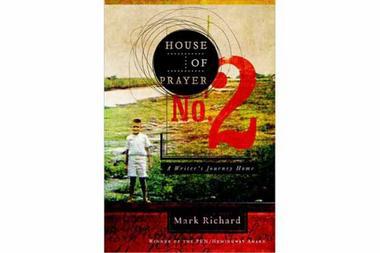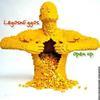
A quick critique of House of Prayer No. 2: A Writer’s Journey Home, a touching memoir by Mark Richard:
It’s an easy read. The book is written in a fragmented and loose style, switching between a kind of second person narrative to third person describing “the boy”. It’s written much like a conversation, of someone objectively describing a life that could potentially be your own. Only the meaningful and influential characters encountered in Richard’s’ life seem to deserve their names.
The story itself is of a pitiable childhood based in the South and around Virginia in the ’60s. ”The boy” has his share of misfortune and, though he is somewhat neglected, he is better off than many other people in his town. A kind of lost boy is depicted, a wanderer and an oddball, a gifted but socially awkward one. He is loved by some, mistreated by others. He is capable of compassion but also of egregious sins, as are we all. He seems bent on emotional survival, on blindly stumbling forward in life until he finds some unknown component he feels is missing, and on personal satisfaction. ”The boy” grows up to be a no-nonsense and inwardly honest individual to the point he can inwardly admit what many of us cannot — that he is lacking and spiritually destitute.
One thing that stands out is the diversity of this character’s acquaintances, as we see him hanging out with seedy locals, salty captains, aimless transients, recreational druggies, and then….Jackie Onassis? It is clear that, by the time Mark Richard reached adulthood, he overcame any awkwardness and developed into a kind of chameleon who got comfortable in his own skin.
I like how imperfect the sentence structure is, commas like pauses throughout where periods should be, much like our lives being formed and ourselves being defined as we go, oftentimes haltingly, also stumbling blindly but moving from day to day, sometimes onto daring new pursuits, other times headed back home to mother. Still, the colorful life shared in carefully chosen words is articulately described, even acutely, so the reader can feel the frustration and disillusionment, disappointment and hopelessness in certain parts.
I enjoyed how the story sewed up, albeit kind of abruptly. Richard has lived as a cripple, a newcomer-stranger, as a wrongly accused man, as a sinner, as a scavenger, a vagrant, a husband, a father, a congregation member, and an acclaimed writer. His roles are so varied that I think his life was meant to mirror every character who seeks out something — anything — better than what he has found so far. Most happily, he has achieved what we all strive to do, which is to find our faith as we journey on, and then own it until we feel complete.
Richard’s life is hardly an ordinary life; it is nothing if not colorful. The book is full of miscellaneous experiences, even the trivial, that formed him — some that I think would have destroyed me, others that I would gladly skip altogether and am glad to have only read about. I was relieved he finally found what he was unknowingly being prepared for throughout his life.
This very amateur review is highly subjective, as I (deliberately) have not discussed my impressions with anyone else who has read it. To me, the story is about constantly exposing oneself to new experiences, actively searching for fulfillment. It is about being drawn through God’s prism and allowing Him to bless others through you even when you do not yet have your answer, and then finally being pulled into the light of your own salvation.
If you’ve read it yourself, I would love to hear your impression.
Like Be the first one who likes this post!


